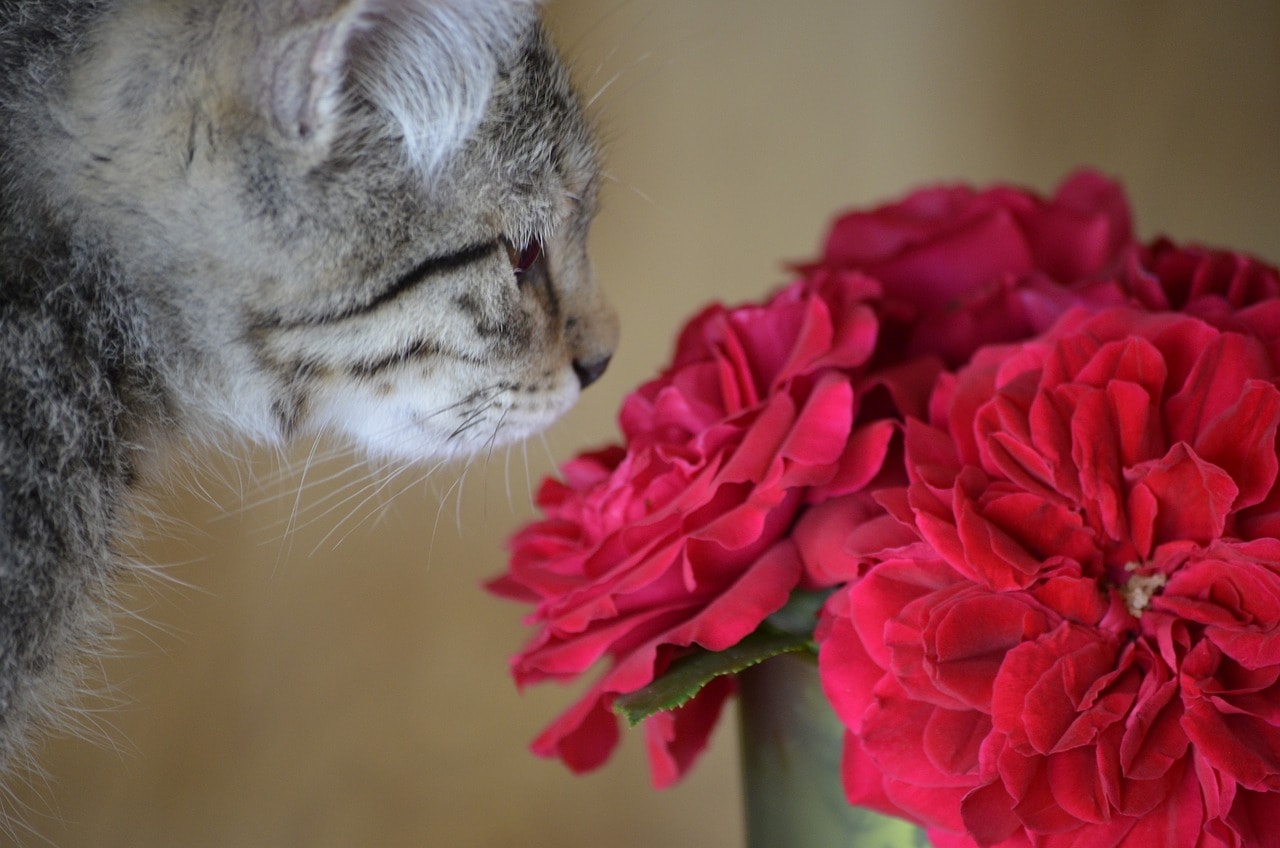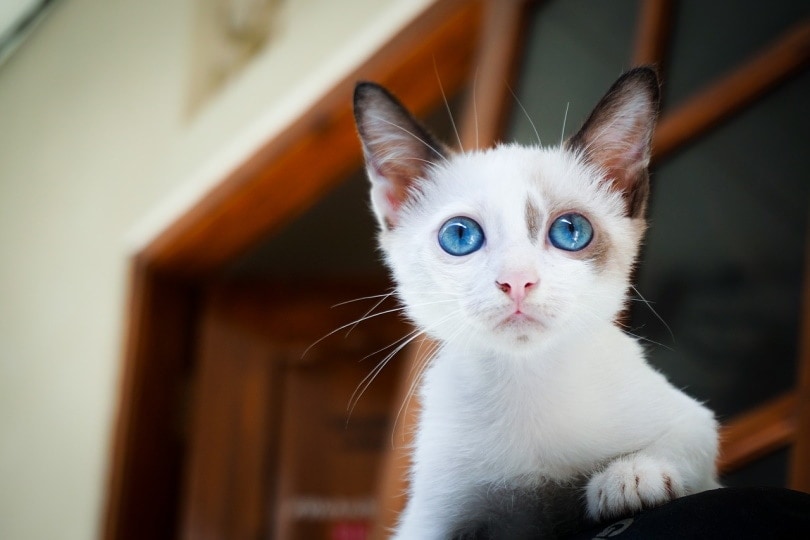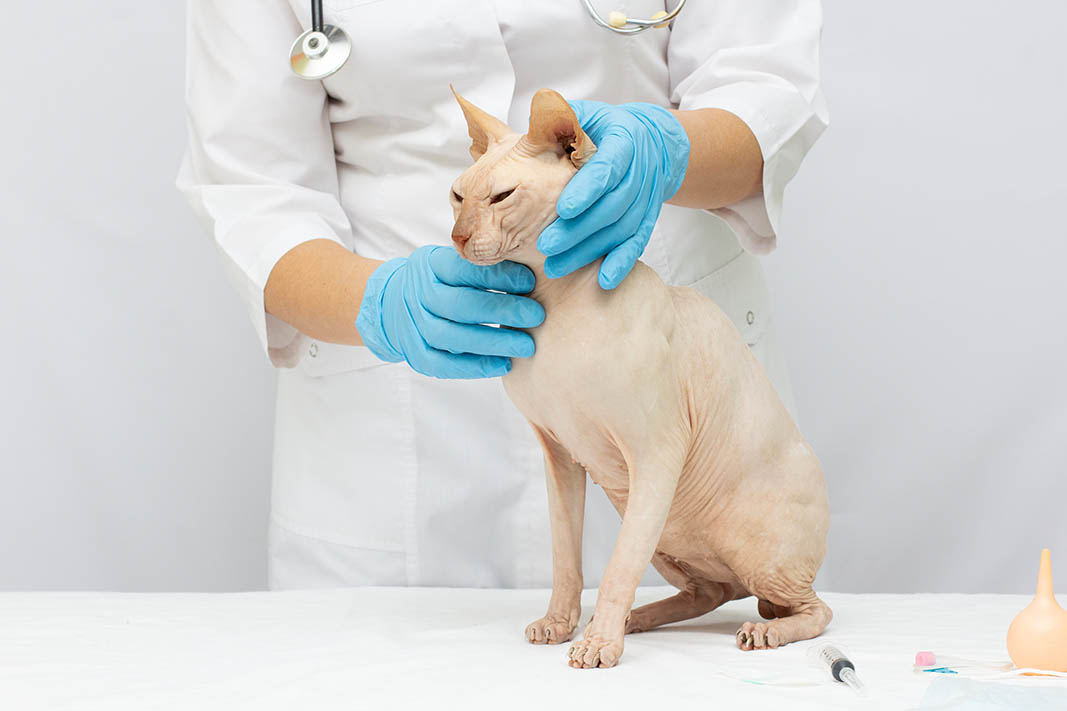Caring for Kittens vs. Older Cats: The Key Differences
Updated on
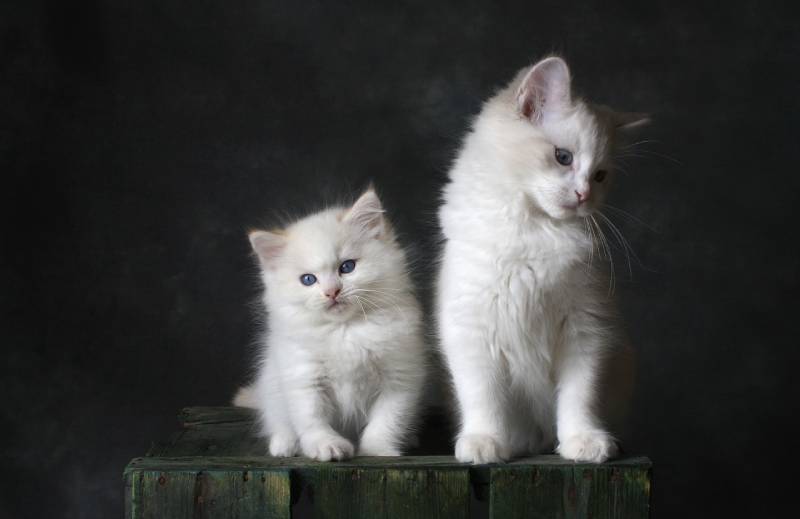
Click to Skip Ahead
Cats have pretty similar needs throughout their lifespan. However, there are some differences between caring for a kitten and caring for an older feline. Generally, kittens are more work. They require more training, as they often come without any previous training. They also need feeding more often due to their small stomachs.
On the other hand, most older cats will already know how to use a litter box. They may already be socialized and will need feeding less often. Older cats also need less healthcare (usually), as most have already been vaccinated.
At a Glance
- More frequent feedings
- Requires litterbox training
- Requires socialization
- Vaccinations, spaying/neutering
- High energy
- More prone to accidents
- Fewer daily feedings
- Usually already litterbox trained
- More settled into their temperament
- Age-related health concerns (varies)
- Less exercise needed
- May have mobility concerns
Overview of Caring for a Kitten
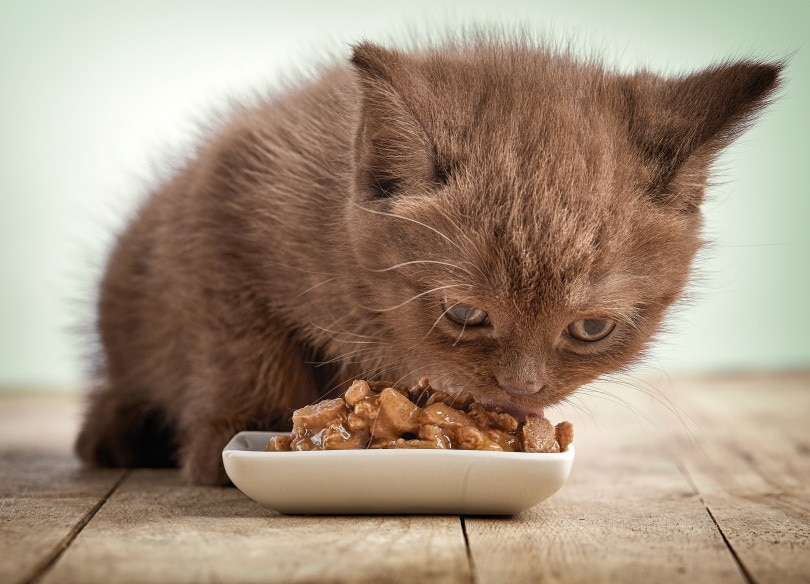
Caring for a kitten can be very rewarding, but it often requires much more work than caring for an adult cat. Therefore, you should ensure you have the time and energy to commit to a kitten before adopting one.
Feeding
Proper nutrition is necessary for a kitten to grow properly. Because kittens are growing, they require specialized nutrition. They must be fed quality kitten food that contains all the vitamins and minerals they need. Otherwise, they may not grow properly and develop health problems.
Furthermore, kittens have very small stomachs and tons of energy. Therefore, they must be fed more often than older cats. Most cat owners feed their kittens at least three times a day.
Litterbox Training
If you adopt a new kitten, you will need to support them in learning how to use a litterbox. Most kittens adapt to a litter box rather quickly. However, some do take longer to adjust. Start by placing the litter box in a quiet and easily accessible location.
Show the kitten the litter box and gently place them inside after meals or naps. If they eliminate outside the box, clean it up without punishment, but praise and reward them when they use the litter box correctly. As we previously said, some kittens need more help than others.
Our favorite enzyme cleaner for eliminating pet smells and stains is our very own Hepper Advanced Bio-Enzyme Pet Stain & Odor Eliminator Spray. It makes clean-up a breeze because it permanently removes even the very worst smells and stains (urine, feces, vomit, you name it!) from basically any surface you can imagine.
Socialization
All kittens need to be socialized to ensure they are adaptable to different situations and people. An unsocialized cat will be more fearful than others and may even develop aggressive tendencies. Kittens must be socialized from a young age.
Luckily, socialization is pretty straightforward. You just need to introduce your kitten to many different sights, sounds, and people. Encourage positive interactions and play with anyone that comes to your house. You should also socialize your cat with other animals, including other cats if possible.
Veterinary Care
Kittens need regular checkups to check on their growth and provide them with vaccinations. These vaccinations usually start at 6–8 weeks. However, different kittens may have slightly different schedules.
You’ll likely need to spay/neuter your kitten, too. These procedures are often recommended around 4 to 6 months of age.
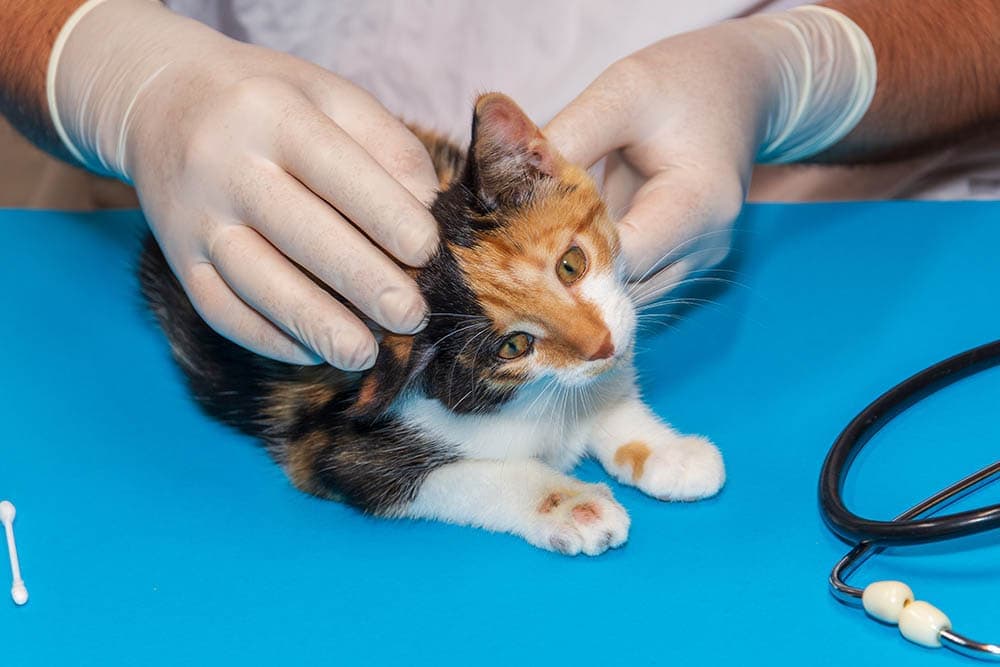
Exercise
Kittens need plenty of exercise to thrive. They are very playful—much more than most older cats. The large majority of kittens are not cuddly. Instead, they want to spend most of their time playing. Therefore, you need to provide them with plenty of toys to help them stay worn out and prevent them from playing with things they shouldn’t.
Catnip is safe for kittens, but only in moderation. A sturdy toy like Hepper’s Catnip Stix can give your kitten hours of safe fun!
Safety Concerns
Kittens are very small and curious. They will often eat things they are not supposed to. Kittens’ teeth are just like human babies do, which can lead to lots of chewing. Sometimes, this may include chewing on harmful things, like wires and toxic plants.
Ensure your home is kitten-proofed by removing potential hazards such as toxic plants, chemicals, and small objects. Your kitten should be kept in a very kitten-proof area when you aren’t home with access to food, a litterbox, a bed, and toys.
Overview of Caring for Older Cats
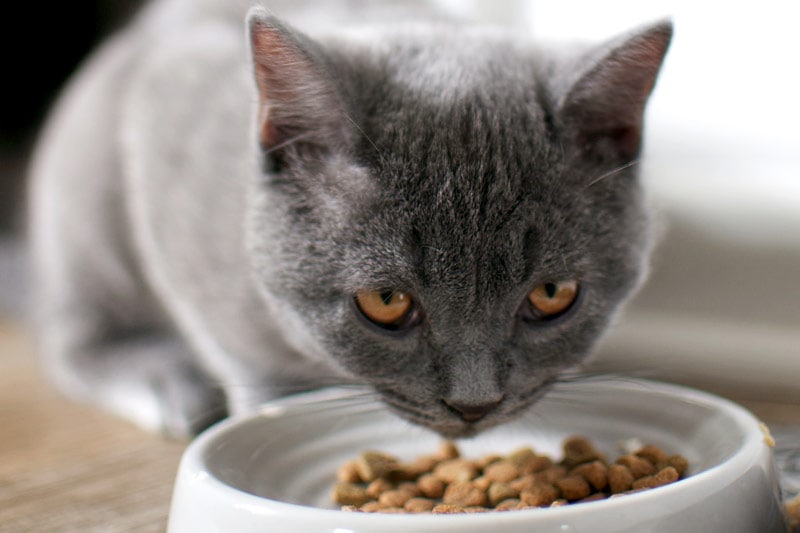
Caring for older cats is often considered easier than caring for kittens. However, this is only true if the older feline is already litterbox-trained and socialized. An unsocialized adult cat that has never used a litterbox is going to be very hard to adapt to family life.
Therefore, when it comes to caring for older cats, it varies a lot from cat to cat. They’re much less changeable than a kitten, which can be a good thing or a bad thing.
Feeding
Older cats often do fine on quality adult cat food. However, some do have specific dietary needs. Cats with health problems may need specific foods. Furthermore, if your cat is particularly lazy or active, you may need to select a lower or higher-calorie food. Nutrition needs vary a lot from cat to cat.
When cats begin to develop age-related health issues, like dental or joint problems, you may need to switch them to senior cat food. These foods are designed to support cats with age-related health problems. Therefore, there isn’t a certain age when your cat needs to make the switch. It depends on how well they’re aging.
While providing our feline companions with high-quality food is paramount, selecting the right food and water bowl is equally important. The modern yet practical design of our Hepper NomNom Cat Bowl combines cat-catered features, like whisker-friendly shallow dishes and slight elevation, with a contemporary style aimed at protecting your floors from messy eating and drinking. The NomNom is entirely dishwasher safe and was thoughtfully created with your cat’s health and well-being in mind.
Veterinary Care
Adult cats may need less vet care than kittens, but they should still be taken for a yearly checkup. Schedule routine visits to monitor their health, detect any age-related issues early, and discuss preventive measures or treatment options. Your vet may recommend blood tests, dental cleanings, or other screenings to assess their overall health.
Your cat will likely need regular vaccination boosters, too.
Exercise
Adult cats vary a lot in their activity level. Most aren’t as active as kittens. However, many breeds tend to remain very playful into their adult lives. You’ll still need to provide plenty of toys, climbing structures, and playtime.
However, you can expect it to be less than the cat needed as a kitten.
Accessibility
Senior cats may have problems with mobility, so you may need to start thinking about how to make your house accessible to them. Provide low-sided litter boxes to accommodate any mobility issues and make it easier for them to enter and exit. Consider providing ramps or steps to help them access their favorite resting places, such as sofas or beds. Older cats may also benefit from heated pads or blankets during colder months.
Each senior cat is different, though. Some never have any mobility problems. Therefore, you’ll need to adjust your home to fit their specific needs.
Are Kittens Harder to Take Care of Than Other Cats?
Generally, kittens do require more work than other cats. They’re more challenging to take care of simply because more effort must go into their care.
For instance, kittens are often more playful and energetic. They play a lot, which often means that you have to play with them a lot. They don’t tend to cuddle that much; that usually doesn’t come until later. They may also need frequent monitoring to prevent them from getting into harmful situations, as they can be very curious.
Kittens must be trained to use a litterbox. Luckily, this is often pretty straightforward, even with a kitten that’s never seen a litterbox. However, it does take extra time and effort to teach a kitten to use a litterbox properly.
Kittens also need vaccinations and extra vet care. They require these regular veterinary check-ups to monitor their growth. Plus, you may also need to spay or neuter your kitten.
Perhaps the hardest part of raising a kitten is the amount of required supervision. Kittens can get into very small spaces, tend to be very curious, and aren’t as cautious as adult cats. Therefore, they’re much more likely to get into trouble or eat something they aren’t supposed to. You have to keep a much closer eye on a kitten than an adult cat.
That said, kittens are much more adaptable and trainable than an adult cat. While they are considered harder than adults, that’s assuming the adult cat is well-trained and socialized. A poorly trained, fearful adult cat is much more difficult to take care of than a kitten, and it will take much more time for them to be well-adjusted members of the family.
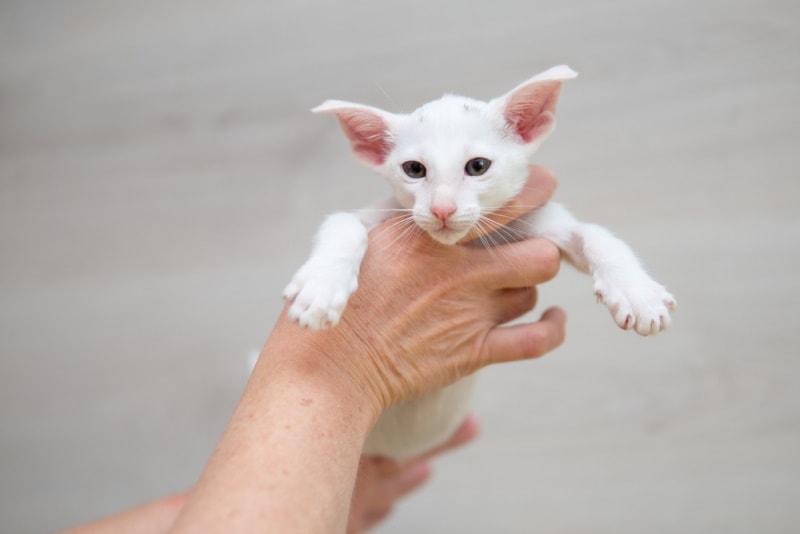
What is the Best Age Cat to Adopt?
There is no cat age that is best for everyone. It depends largely on your preferences and what you’re looking for in a feline.
- Kitten (8–12 weeks): At this age, kittens are just able to be away from their mothers. They’re extremely curious and playful, requiring lots of supervision and training. This age is extremely important in a cat’s life, as it lays down their temperament and behavior as an adult.
- Young Adults (1–3 years): Young adult cats have transitioned out of their kitten phase and usually have established personalities. They’re often still pretty active, but many also like to cuddle. They don’t require as much supervision, and they still take quickly to training and socialization.
- Adult Cats (4–7 years): These cats are very settled in their temperament and behavior. They’re not as active as younger cats and tend to spend more of their time laying around. If trained and socialized properly, they can be hands-off companions.
- Senior Cats (8+ years): After 8, most cats fall into the “senior” category. Sadly, these cats are often overlooked at shelters. However, they can make great companions. They tend to be very mellow and have lower energy levels. Therefore, they’re great for those just looking for a cuddle buddy.
Conclusion
When most people consider adopting a cat, their mind jumps to a kitten. However, kittens require a significant amount of work and may not be right for every home. There are many other age groups you may want to consider adopting. For instance, cats between 1 and 3 years are often still able to be trained and socialized, but they don’t require as much supervision as kittens.
Senior cats can also be a great option for those looking for a calm, patient feline. When you adopt an older cat, you typically know what you’re getting, as their personalities are much more set in stone. The same can’t be said for a kitten.
Featured Image Credit: MissKaiser, Pixabay





